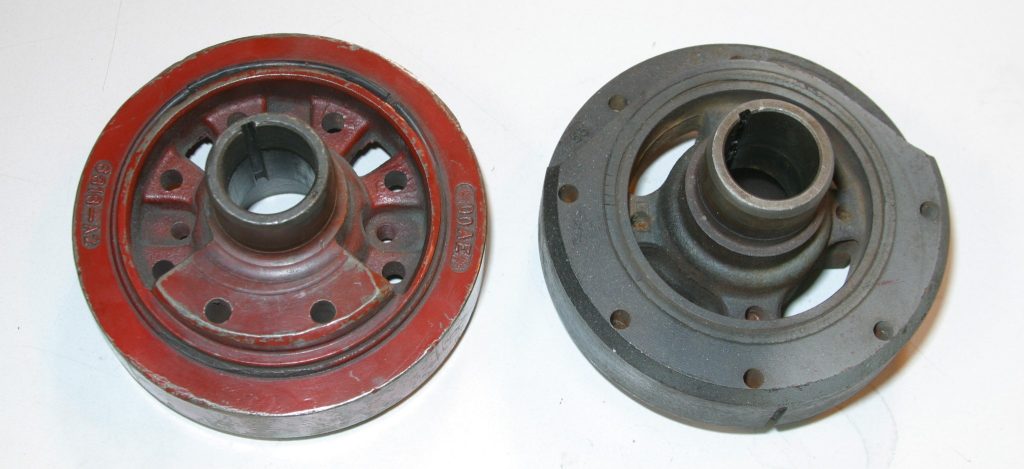Q: What’s the difference between internal and external engine balance?
…

A: An engine must be balanced to ensure smooth operation.
Balancing an engine minimizes vibration which maximizes engine life. An engine can be balanced internally, externally, or using a combination of both.
Balancing an engine requires offsetting the weight of the pistons and rods, which involves adding or removing weight from the crankshaft. The harmonic balancer and/or the flexplate or flywheel can also be weighted.
Despite its name, a harmonic balancer doesn’t actually balance the rotating assembly. It absorbs torsional vibration to prevent vibrational energy from being transferred to the other parts of the engine. This is why harmonic balancers are also commonly called “dampers” or “dampeners.”
Internal Balance
An internally balanced engine has all the counterweight on the crankshaft.
External parts like the balancer and flexplate/flywheel have a neutral balance, so they won’t affect other rotating parts.
External Balance
If the crank’s counterweights are too light, the engine must be externally balanced. This involves adding weight to the harmonic balancer and/or the flexplate or flywheel.
How does engine balancing affect performance?
Generally speaking, internal balance is the better option.
External counterweights can cause the crankshaft to flex at high rpm, which can cause engine damage. However, either type of balance is fine for most engines.
Converting from external to internal balance can be expensive. It requires a new crankshaft, harmonic balancer, and/or flywheel or flexplate.
You may also need to clearance the block for the larger counterweights. Unless you’re racing, it’s easiest to balance the engine the same way the factory did.
| Engine Type | Factory Balance Method |
|---|---|
| Chevy 305/350 (2-piece rear main seal) | Internal |
| Chevy 396-427 Big Blocks | Internal |
| Chevy LS Engines | Internal |
| Ford Modular Engines | Internal |
| Chevy 400/454 | External |
| Ford 302/351W | External |
| Chevy 350 (1-piece rear main seal, including LT1) | Combination of Internal & External |
…
Important Notes
Balanced rotating assemblies come pre-balanced from the manufacturer. These can be installed without taking parts to the machine shop.
If you buy an unbalanced rotating kit, you will need to have it balanced before installing it. The same is true if you buy a crankshaft, connecting rods, and pistons separately.
Crankshafts are listed as internal or external balance. This does not mean that it’s already balanced. It just tells you how the crank is intended to be balanced. It must be checked with the specific piston and rod combination you use.
…

Thanks for the post. I know the difference between the internal and external engine balance
The best atvice you can get, well done! Like what I have read, someone knows what there talking about! Now put the same thing about the Mopar motors on here!
Great info. Some mechanics just think they know what they are talking about. But between you guys and Google the rest of us really do know. Thanks guy. Keep us tuned in with the right balance and we’ll run forever.